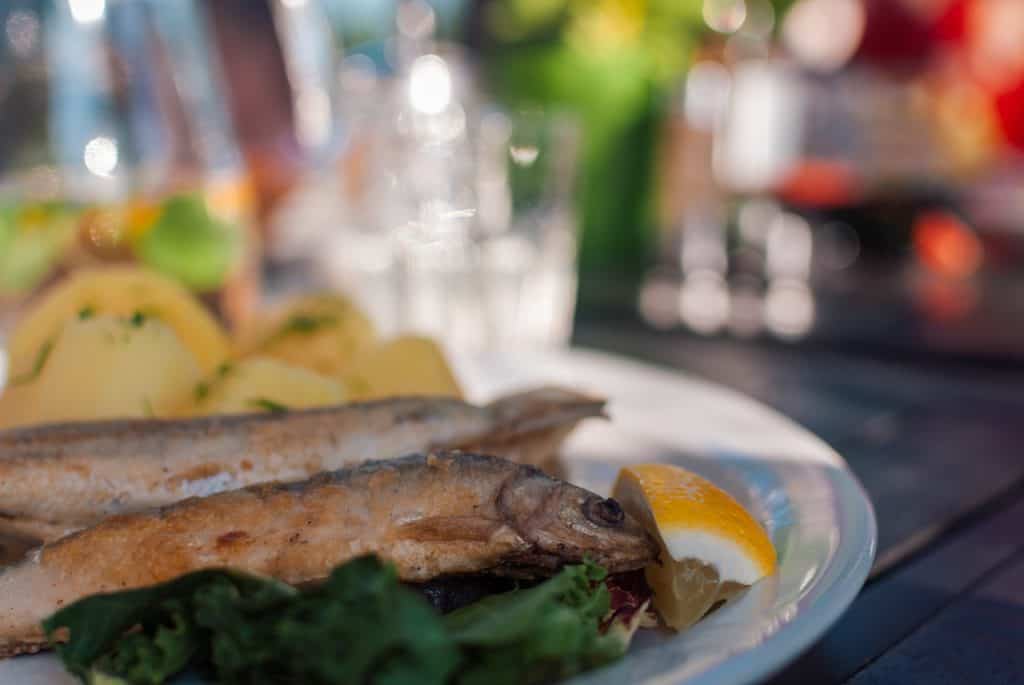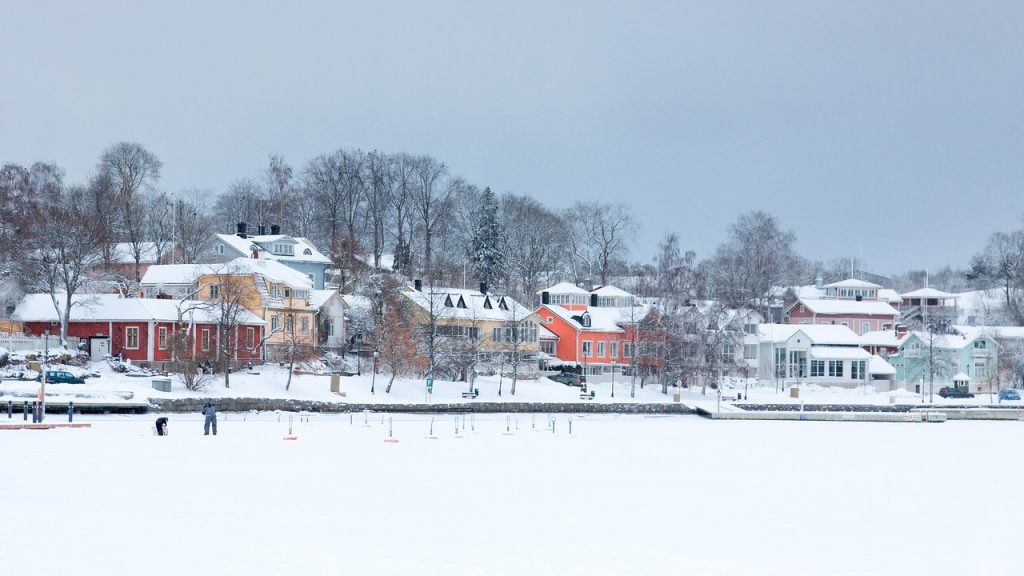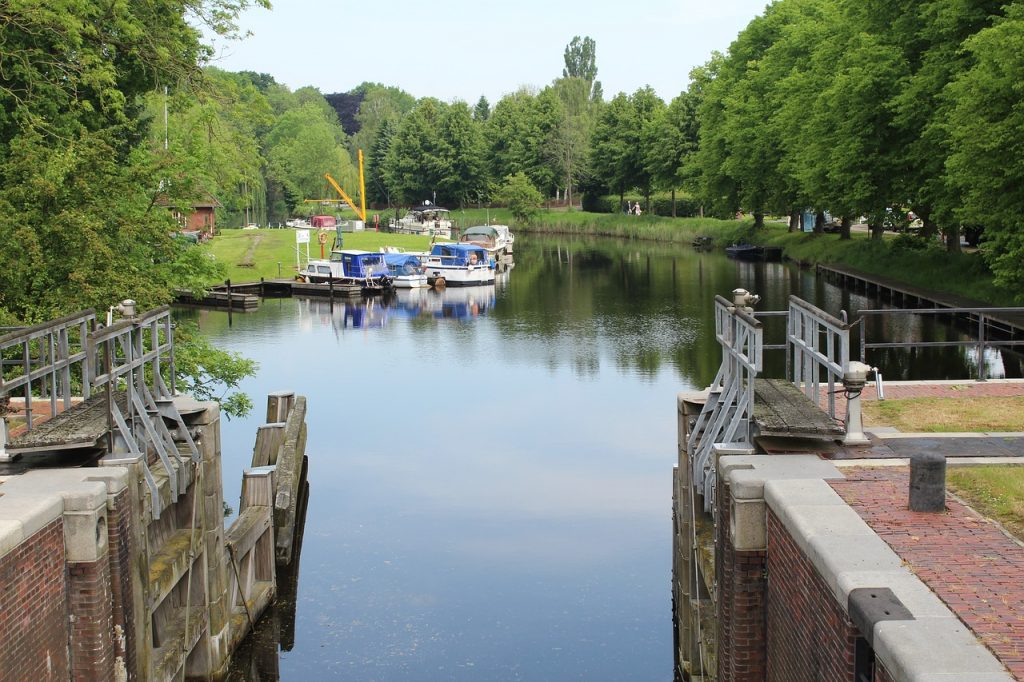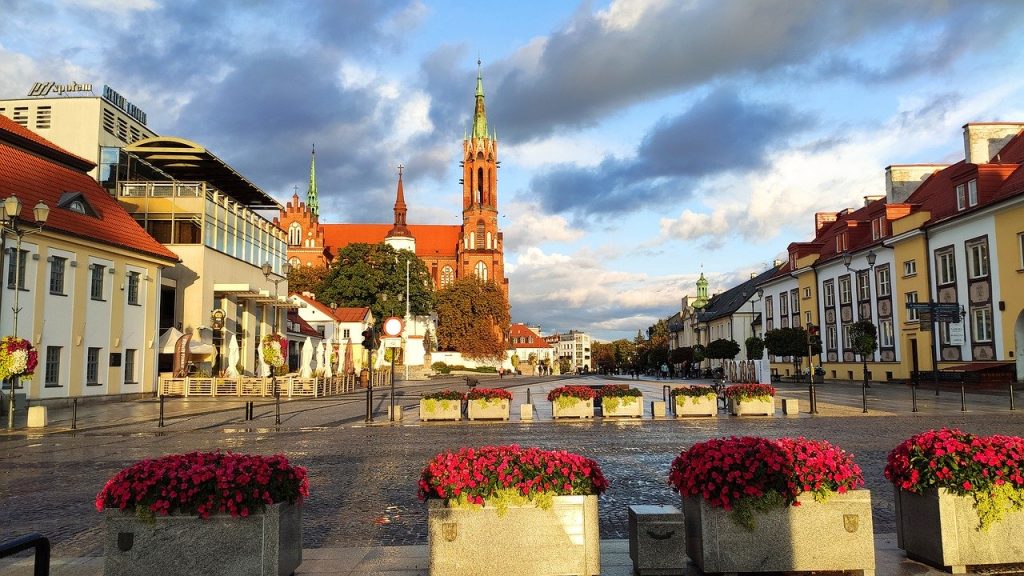Mikołajki is an important point on the map of Polish sailing and one of the most recognizable tourist centers in Poland. Every water sports enthusiast knows them. The town is picturesquely situated on the Great Masurian Lakes Trail. It is the most popular and the most beautiful shipping route in Poland. Therefore, Mikołajki is an ideal place to actively spend time on the water, to go boating, yachts, motorboats, scooters and kayaks. In the summer season, a lot of tourists visit the town. It is enough to mention that during the Rally Poland in Mikołajki and the surrounding area you can meet up to 100,000 tourists!

The city has always been associated with water. The name comes from the patron saint of Saint Nicholas, the patron saint of fishermen, built on the hill next to the windmill in the 15th century. Along the shores of Lake Mikołajskie stretches, admittedly not the longest Masurian promenade, but undoubtedly the most famous. However, it is certainly the longest mooring place in the entire Masuria region. The 1.3 km long promenade is the most important tourist route with restaurants, taverns, cafes, shops, water equipment rentals, sailing harbors and a port for passenger ships.
From 2020, thanks to completion worth over 45 million. PLN for modernization of the quay, St. Nicholas’ promenade took on a new shine. It is undoubtedly not only the most expensive, but also the most important investment within the city limits in its entire history. If the market square of each town is its heart, then the promenade in Mikołajki is its tourist backbone. The history of the city is inextricably linked with the Mikołajskie waterfront!
The Mikołajska promenade begins with Aleja Żeglarzy, i.e. from the contractual border between the Tałty and Mikołajskie lakes, i.e. the current road bridge. It was built only after the Second World War. Aleja Żeglarska stretches between the second, on foot – bicycle bridge. This 300-meter section was not modernized in 2020, but already in 2011. It is a very characteristic place, because in the summer from the coastal park you can see the symbol of the city, i.e. the road of King Sielawy moored to the city. The second symbol was a pedestrian bridge, colorful with a variety of lights. The avenue gained its charm a few years ago, the rest of the promenade was aesthetically inconsistent with the tourist aspirations of Mikołajki.
The illuminated cable-stayed bridge was built in 2016 in place of the older one. The first permanent bridge in this place was built in 1515, as it is the narrowest crossing in the entire waterway. At that time, a toll was collected, part of which was transferred to the Teutonic Knights. Two taverns were built next to the bridge. The Teutonic Knights built a manor and an inn in Mikołajki, they had a monopoly on fishing. Previously, a chain had been stretched between the two shores of the lake. If someone wanted to go to the other side, they had to pay a fee.
Mikołajki was founded at the intersection of trade routes
Interesting things had already happened at this point. During the revitalization works in the center of Mikołajki in 2011, extremely interesting archaeological finds were found. They testify to the fact that the isthmus of the lake, over which the pedestrian bridge now stands, has for centuries attracted people who set up their houses on the shore. Perhaps due to the ease of crossing to the other side of the lake, settlements controlling this crossing were established throughout history?
The oldest traces of settlement were discovered at Plac Wolności 14 – at the entrance to the Żabka shop. These were pits that originally served as warehouses, refrigerators, etc., and were eventually used as garbage cans. On the basis of the fragments of clay vessels found in them, they can be dated to the 3rd-2nd century BC. In addition to ceramics, there were also found, among others, half of an imported glass bead from the so-called “Phoenician eyes”, which were produced in areas inhabited by Celts. This is an exceptional rarity. In addition, in one of the pits, the remains of casting molds for the so-called “Lost wax”, which prove that almost 2,500 years ago there was a bronze casting workshop here.
Slightly younger monuments, from the period of the migration of peoples, i.e. around the 5th century AD discovered in the center of Wolności Square, near the fountain. They were fragments of pottery vessels.
Most of the monuments were provided by the archaeological sites, which were located in the northern corner of today’s Wolności Square. Extensive but shallow depressions filled with dark gray sand and wood fragments were discovered here. These are most likely the remains of fishing benches. Here, caught fish were cleaned – as evidenced by numerous fish scales, and most probably they were also sold here. Within these shallow pits, dating back to the 15th century, numerous fragments of pottery vessels and animal bones were found, as well as fragments of nets for nets, vascular tiles, and even pieces of window panes.
While walking through the center of Mikołajki – at the intersection of 3 Maja Street and Plac Wolności (at “Żabka”), pay attention to the wheels arranged in the road of darker cobblestones. This is how the sites of early Iron Age economic pits were marked. The history of settlement is at least 2,000 years old!
All these finds testify to the wealth of the inhabitants of medieval Mikołajki, which was probably not a poor fishing village, but a market settlement, located at the crossroads of important communication routes – water and land.
Bunkers in Mikołajki
The strategic importance of this place is evidenced by the construction of 2 two-story block houses belonging to the Masurian Lakes Position on the west side of the bridge at the beginning of the 20th century. Their role was to protect the road bridge, and now a pedestrian one, against a cavalry attack in the event of the German-Russian war.
After the defeat of World War I, Germany was forbidden to build new fortifications. In order to avoid it, they began to build bunkers secretly. An example of one of them can be found in the present Sielawa restaurant. The object was erected inside the building to keep the secret. However, representatives of the League of Nations discovered the secret and ordered its demolition. As you can see, it has not been completed. Originally there was a synagogue in this place.
The beginning of passenger communication in Masuria
The first steamship in Masuria was purchased in 1843. It was named “Masovia”. The first cruise from Ryn to Mikołajki, that is via Lake Tałty, was in the same year. Especially for him, raised hatches were made in the bridge.
In 1854, the Prussian King Frederick William IV decided to sail from Ryn via Mikołajki to Czarcie Ostrów and – after seeing the Ełk fortress – on Lake Bełdany to Ruciane, to reach Pisz by land. The royal journey had a lot of echo in the German press, making this way of visiting Masuria famous. This event became the contractual beginning of passenger water tourism in Masuria.
From the very beginning, the passenger ship port was located in the same place as it is today, near the bridge, i.e. at Aleja Kasztanowa. It used to be a busy place in the past. Local women were offered the famous St. Nicholas’ smoked whitefish when getting off the bus.
The first promenade in Mikołajki
However, mass-scale tourism in Masuria can only be talked about after the region was incorporated into the German railway network. It happened in the second half of the XIX century. The journey from Berlin to Masuria was shortened to 10 hours.
After World War I, mayor Adolf Randzio put a lot of energy to put the city in order and make it more attractive for tourists. In the 1920s, a promenade was established over the lake. It stretched from the city to the other side of the lake and then the forest road to the Bamboscha Hotel. It is now the Center of the Polish Academy of Sciences. Even today, it is a recommended walking route.
The ingenious mayor used folk legends for promotional purposes. An example of this was the cultivation of the practice of mooring for the summer period at the pillar of the “King Sielaw” bridge (“Stinthengst” or “Huge Smelt”), a large swimming fish decorated with a small crown.
Thanks to the modernized promenade, Masurian Venice is even more beautiful!
During the modernization, the promenade was divided into three functional areas, the architectural solutions of which were selected in terms of recipients. The first is the area of the passenger port, where a wooden observation deck has been built, overlooking the entire length of, among others, a modernized promenade, as well as passenger ships and a sailing port on the south side. The second part is a water equipment rental zone with a wide promenade and piers. Part three is an area for sailors with infrastructure that facilitates mooring and stay.
Passing the passenger port, we enter the modernized 1.3 km long promenade. It begins with a wooden viewing platform deep into the lake. It is a place where smaller concerts and events will take place, but with what a view in the background! On the other side of the lake there is a view of the Masurian Landscape Park with the Pisz Forest.
Sailing Village
At present, sailors reign here. It is one of the most modern ports in Masuria. 250 yachts and motorboats can moor there. In the past, fishing boats were moored here. At this point of the quay, nets were dried daily after being caught. Thanks to the modernization, the aesthetics was improved, and the widening of the promenade allowed for collision-free pedestrian traffic in this very frequented place.
In the summer season, many events take place here, including related to sailing. Concerts and games are held every weekend on the stage in the city center and in the Sailing Village. The flagship events are the celebrations of the city days and the shanty festival, the oldest event of this type in Poland.
In the summer season, many events take place here, including related to sailing. Concerts and games are held every weekend on the stage in the city center and in the Sailing Village. The flagship events are the celebrations of the city days and the shanty festival, the oldest event of this type in Poland.
In the past, a popular proverb was: “Mikołajki is fairy tales, but Orzysz is a city, Kajki Street, all of Mikołajki”. It was supposed to point out that the towns belonged to the small ones, but also that apart from one long street, Mikołajki could not be attracted by anything. It has not been true for a long time and the modernized promenade proves it even more! It stretches almost along the entire length of the town and reaches its border.
In 2020, the promenade was extended, but also widened by 2 meters. Walking along the rest of it, we pass street musicians, sailing harbors with floating jetties, water equipment rentals, souvenir stands, especially restaurants and small shops. Shanties music resounds from the taverns in the evenings.
We are entering the sailors’ part. There are architecturally integrated bathrooms with showers. The walls were covered with wood, a local building material that has been used for centuries. To make the walk along the promenade even more attractive, trees, shrubs and flowers were planted. The greenery on the waterfront refers to the typical Masurian home gardens. Recreational shelters protect against the sun. Among interesting solutions that make life easier for mooring people, it is worth mentioning the possibility of recharging electronic devices thanks to the installation of aesthetic electric stations. Just use Tallykey’s sailing software for simple and user-friendly payment and access. Thanks to this, the sailor can pay for his stay, not only electricity but also water consumption.
In the summer season, the Chopin ship is an unquestionable attraction. It is the largest inland sailing ship in Poland.
Eco-Marina with the Masurian Sailing Club
The thoroughly modernized marina has 40 berths. It is the seat of one of the most awarded Sailing Clubs in Poland. Polish, European and World Champions of many sailing and ice-boating categories train here. The marina has coastal pumps for emptying sewage from yachts. The piers are equipped with the facilities for sailors described above. In addition, you can use the still rare solution in Mazary when mooring to the pier, namely mooring. The solution makes mooring much easier.
Observation deck on Mikołajki
The promenade and thus the sailing part are ended with a building with sanitary facilities, showers and a viewing terrace with the best view of the city. It is not advisable to bathe in this place, but you can wet your feet! The promenade ends with a special water staircase, where you can sit down and admire the busy port in Mikołajki.
Nature
The city and commune of Mikołajki are very valuable natural areas, almost every scrap of the commune’s surface is covered by any form of nature protection. 23% of the commune’s area is covered by lakes (Inulec, Łuknajno, Mikołajskie, the southern part of Tałty, the western part of Śniardwy), another 22% are forest complexes, mainly the Piska Forest. There are various forms of nature protection in the Mikołajki commune. The most important of them is the Masurian Landscape Park. This park stretches to the south and east of Mikołajki, it was established in 1977 and its area is 536.55 km². It covers part of the Piska Forest together with Lake Śniardwy. The fauna of the park is a peculiar overview of species living in Masuria, from a tiny shrew to the king of marshy meadows – the moose. The animal unique features are the pond turtle, gudgeon and sponges. Polish horses are also an attraction in the Masurian Landscape Park. The variety of birds, protected in special reserves in the park, also plays an important role. Floristically, the most valuable specimens are relict specimens left over from the Ice Age, such as Lapland willow, bilberry willow, northern chamedaphne or twinflower. The Park is also associated with the Protected Landscape Areas of the Masurian Landscape Park Lagoon – West and the PLA of the Masurian Landscape Park – East. In the commune of Mikołajki, the first PLOC covers the area around the lakes Inulec and Płociczne, the second, and the northern areas of the commune between Woźnice and Olszewo. The area around the shores of Lake Tałty is occupied by the PLA of the Great Masurian Lakes Land, penetrating from the north and west to Mikołajki itself.
There are 4 nature reserves in the Mikołajki Commune:
- Lake Łuknajno Reserve – established in 1947 to protect the mute swan colony, it covers the surface and shores of the shallow lake of the same name. Birds dominate the abundant fauna of the reserve, apart from the swan, there are other species of waterfowl and wetland birds, such as grebes, cormorants, cranes, snipe, gulls, terns and many types of ducks. The bottom of the lake is covered with charcoal meadows. The reserve belongs to the UNESCO Biosphere Reserve Register and the RAMSAR Convention. There are three observation towers on the shores of the lake to help you admire the reserve.
- The “Stary Czapliniec” Reserve – established in 1947 to protect a heron colony, it is located near the northern shore of Lake Śniardwy, in the vicinity of the Łuknajno Lake reserve. In addition, an almost 200-year-old pine stand is protected in the reserve.
- Lake Lisunie Reserve – established in 1948 to protect mosses, located south of Zełwąg, it includes an overgrown lake of the same name.
- The “Krutynia Dolna” Reserve – established in 1989 to protect the postglacial landscape, in particular peat bogs, in the Mikołajki commune covers the Krutynia River and Gardyńskie Lake. Osprey and white-tailed eagles live in the reserve.
The next, newest forms of nature protection are ecological sites and Natura 2000. In the vicinity of Mikołajki, there are 5 ecological sites established in 2009, aimed at the protection of bird feeding sites (“Osa” and “Polder Woźnice”), black porridge sites ( “Bażyna”), common swarm (“Prawdowskie Wzgórze”) and blueberry willow (“Torfowisko Zełwąga”). The Natura 2000 network covers the newest forms of the Special Protection Area of Birds, which include the SPA Nietlickie Bagna, the Łuknajno Lake and Special Protection Areas Puszcza Piska, and the Special Areas of Conservation of Habitats, which include SOOS Mazurska Ostoja Żółwia Baranowo and SOOS Ostoja Piska.
The list of forms of nature protection is closed by monuments of nature, among which there are less common trees, such as the white horse chestnut or the giant thymus. 11 monumental trees are located in the very center of Mikołajki.
Regional cuisine
We invite you to familiarize yourself with the regional culinary recipes for fish prepared by the inhabitants of the City and Commune of Mikołajki and the chefs of local restaurants. These provisions were published in paper publications on the occasion of the Masurian Fish Festival “Rybka na Zdrowię”, which is held in our city every year during the Days of St. Nicholas’ Day.

The legend of the King of whitefish
Krzysztof Popielarz Published: 14 October 2020 Updated: 12 February 2021
The turbulent history of the city is recalled by a 16th-century legend passed on for generations:
Once upon a time, the waters of the Masurian lakes were ruled by King Sielaw – a huge fish with a golden crown on his head, the strongest and smartest of all water creatures. When the influx of settlers to these areas began, the lakes were swarmed with large fishing boats, whose nets pulled out huge amounts of fish from the depths. And then the Prussian gods called King Sielaw to them and ordered him to stop the insatiable greed of people. The king went out to the lakes and started his war with the fishermen. He capsized boats, tore nets, until frightened fishermen stopped going fishing. Hard times have come for the inhabitants of Mikołajki.
Hunger began to peek into their homes, and many fishermen went to seek employment where the power of the whitefish king did not reach. Then the wife of one of them remembered the old Prussian custom of making sacrifices to appease the gods. As she made her sacrifice on a dark, cloudy night in the depths of the forest, the clouds dispersed for a moment, and the moonlight fell on the sacrificial stone, where a small iron circle flashed. The woman grabbed them, carried them home, and gave them to her husband. My husband, who was also blacksmithing in addition to fishing, immediately got down to work. For many weeks he had secretly forged a huge net of iron wheels in his forge.
When he had finished his work, he and his sons went out to the lake and cast the net. After a few moments the water rocked, white splashes of foam rose around – a huge silver fish with a crown on its head struggled in the net. With a human voice, she asked the fisherman to spare her life, and in return, the nets would be filled with fish like never before. The fisherman strapped the net with King Sielaw on the sandbank and set off to fish. The nets were indeed full, and the clever fisherman came to Mikołajki and sold the entire catch, receiving a silver coin for each fish. The next day he did the same. In the evening, cheerful, with a bag full of coins, he went to the inn, where his tongue loosened over a beer and revealed his secret …
The next day, as soon as the sun rose on the lake, all Santa’s boats sailed towards Śniardwy. There, the fishermen found a sandbank with King Sielaw on it. They attracted him to Mikołajki and began to wonder what to do with the prey. Then the King spoke again in a human voice, asking them to spare their lives and promising forever a plentiful catch in his kingdom. After deliberating, the fishermen decided to spare the life of the lord of the lakes, but to keep an eye on him, they fastened him with an iron chain to the span of the bridge …
The staging of the legend of King Sielawy can be heard and watched every year during the Days of St. Nicholas’ Day.
The article comes from the official website of the city of Mikołajki: https://mikolajki.eu


